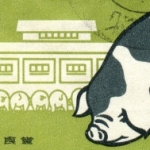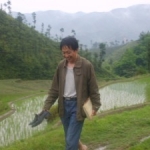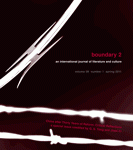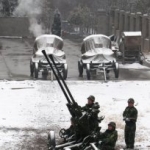
China’s decision to shift toward industrial pig operations, and away from smaller-scale production, has important implications for the future of China’s farmers, the environment and global agricultural markets. This report for IATP traces the history of China’s pig industry as it has evolved over the last several decades from backyard production to highly industrial operations.

There are several reason for this sense of helplessness among the peasantry, including the market economy’s disruption of the peasant economy, the irresponsibility of local governments, and peasants’ lack of social capital, but the fundamental reason is the disorganization of rural society. Rural society today lacks cohesion, “like a sheet of loose sand.” Disorganized peasant households, depending on individual strength alone, cannot overcome natural hardships, nor can they face the challenges of the market or encroachments on their interests, and their self-confidence inevitably declines. The source of peasants’ spiritual poverty, therefore, is their lack of their own organization(s), and their loss of collective solicitude. At the same time, urban culture promoting individual competitiveness and interpersonal alienation has flooded into the countryside, further affecting rural culture and worsening peasants’ spiritual poverty.

Comrade Liu Xiangbo (刘相波), better known as Liu Laoshi (刘老石), was the program coordinator of the Center for Rural Reconstruction at Renmin University of China, Ph.D. student at Renmin University’s School of Agricultural Economics and Rural Development, and founding director of the Liang Shuming Center for Rural Reconstruction. He passed away at 9:45 PM on March 24, at the age of 43, in the hospital of the Tianjin Armed Police Medical School, due to injuries from a traffic accident.

Excerpts from Cormac Ó Gráda’s review of new book by Dikötter, Mao’s Great Famine. “MGF may become the best-known account of the GLF famine for a while. But should it? It is not a comprehensive account of the famine; it is dismissive of academic work on the topic; it is weak on context and unreliable with data; and it fails to note that many of the horrors it describes were recurrent features of Chinese history during the previous century or so…”

Edited by Q. S. Tong and Jiwei Ci. “Since the open-door policy was formally adopted in 1978, {China} has been undergoing radical sociohistorical transformations that have created not only unprecedented wealth, new freedoms, and possibilities, but also widespread and significant inconsistencies and discontinuities that characterize the everyday life of China at the present moment. Is China’s substantially marketized economy sufficient evidence of its abandonment of socialism? Is it a socialist market economy or marketized socialism? Is it a socialist state with “Chinese characteristics” or one without socialism? Would the continuation of economic reform lead to democratization? Thirty years after the reform, China has emerged as a site of paradoxes and contradictions. Contemporary China cannot be fully understood unless some of its most significant new features are identified, analyzed, and comprehended; but our attempt to understand what is unfolding in China requires an acknowledgment of the inadequacies of the accepted views and formulations about the country.”

The snow that graced the city last week amid the rumble of spring festival firecrackers, still lighting up the night sky and contributing intermittent booms throughout the day, was a welcome respite to this excessively dry Beijing winter. The 1 mm of snow that dusted the capital from February 9-10, and the additional 1.7-3.1 mm on February 13, were acts of a central government desperate to combat the worst drought China has experienced in 60 years. Before last week, there had been no precipitation in Beijing for 108 consecutive days, making this the latest first snow since 1950. The entire North China plain is suffering from inadequate precipitation, with potentially disasterous consequences for the upcoming spring harvest of winter wheat.